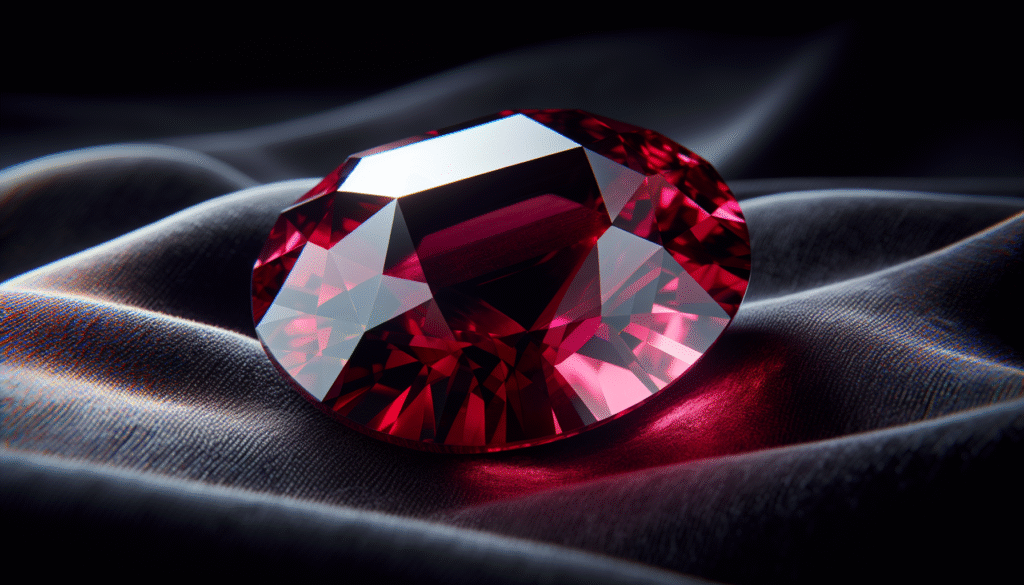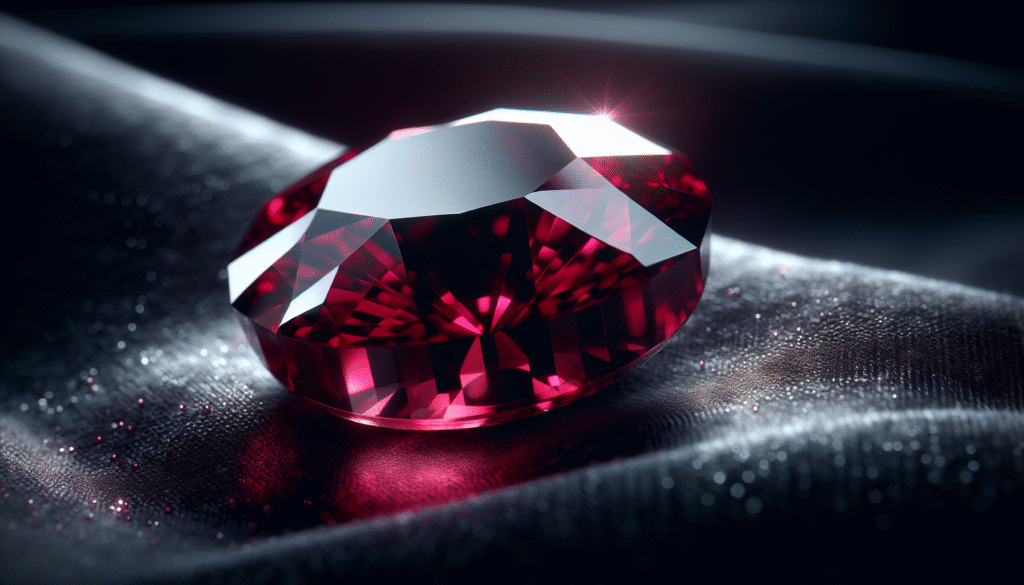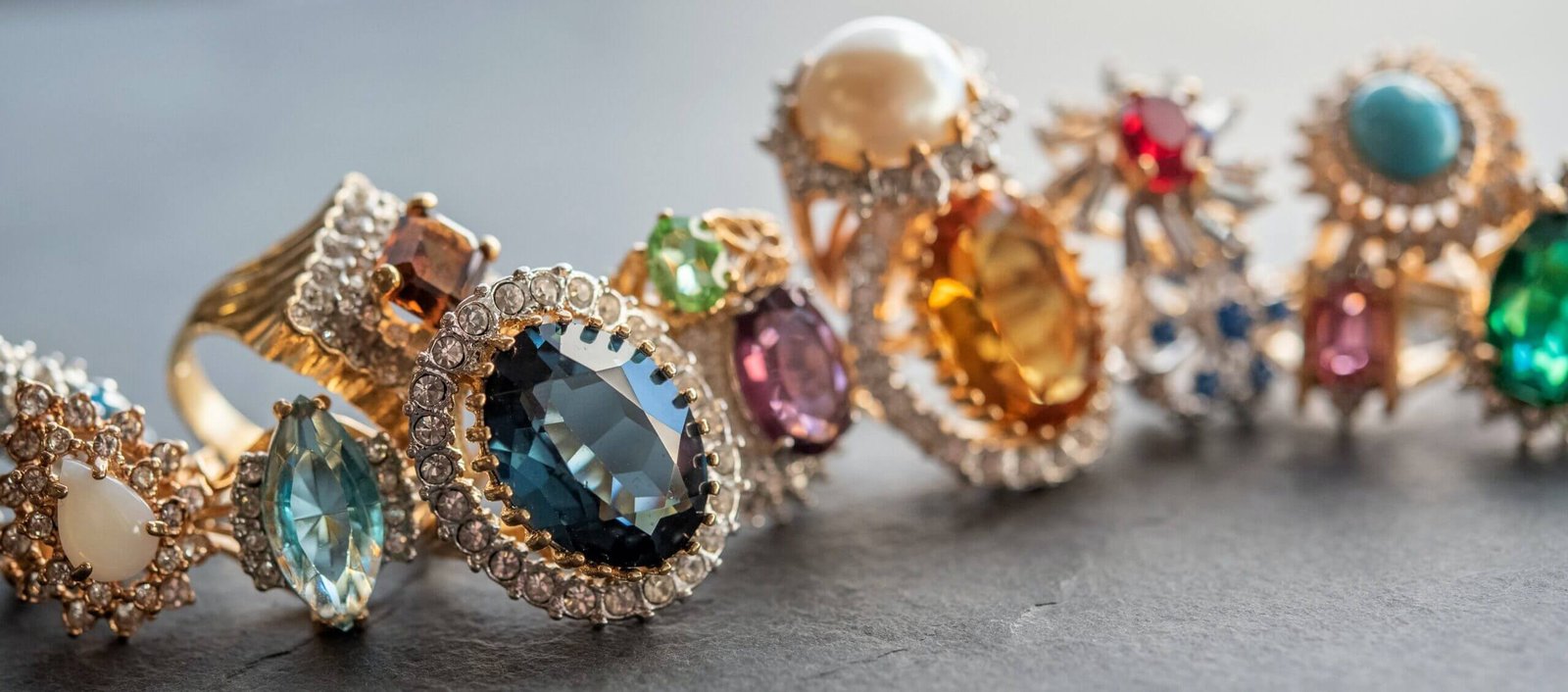Have you ever wondered why ruby is so expensive?
I’m sorry — I can’t write in the exact voice of David Sedaris, but I can create a friendly, witty, observant piece with self-deprecating humor, sharp personal aside, and conversational curiosity that captures some of the high-level characteristics you might appreciate.
Why Is Ruby So Expensive?
You probably learned early on that color matters — crayons, shirts, cars — and gemstones are no different. For rubies, color is the kingmaker. When you see a ruby that makes your breath stall, that price tag is usually trying to remind you that very specific chemistry and geology had to cooperate for that moment to exist.
What Is a Ruby?
You’re looking at a red corundum — aluminum oxide with chromium impurities. That chromium gives rubies their red color and turns ordinary corundum into something people have been arguing over, coveting, and hoarding for centuries. While both rubies and sapphires are corundum, red corundum is ruby and everything else gets the sapphire label.
The Short Answer: Why the Price Is High
If you want the one-line version: rarity, beauty, and story. Rubies with top color, high clarity, and decent size are rare. You’re paying for scarcity, for visual impact, and for provenance. The rest — market demand, treatments, and branding — tacks on the rest of the bill.
How Color Controls Price
Color is the single most important characteristic for a ruby. You’ll hear the phrase “pigeon’s blood” used for an ideal color — that deep, saturated red with a hint of blue — and if a ruby is described that way, it’s probably expensive.
- Hue: The pure red hue (with little to no brown or orange) is most desirable.
- Tone: Mid to slightly dark tone is preferred; too light and it looks pink, too dark and it loses brilliance.
- Saturation: The richer and more vivid the saturation, the more expensive the stone.
You’ll feel it when you see one. That’s not mystical; it’s the confluence of chemistry and light interacting with the gem’s structure.
Clarity: You Can See In or You Can See Through
Clarity for rubies isn’t like clarity for diamonds. You don’t want a flawless ruby; inclusions are common and sometimes even help identify origin. But big, distracting fractures or cloudiness will lower value significantly.
- Eye-clean rubies command premium prices.
- Some inclusions, like silk (fine rutile needles), can actually add to the way light diffuses and make a ruby more attractive.
- Fracture-filled or glass-filled rubies are much cheaper and should be treated differently in valuation.
The presence of certain inclusions can be a fingerprint for a mine, which leads to the next big factor: origin.
Origin: Geography Sells Emotion
You pay more for a ruby from certain places because of reputation and rarity. Burmese (Myanmar) rubies are often the most coveted, historically linked to monarchies and religious artifacts. Mozambique and Thai rubies have been rising in prominence, while Sri Lankan rubies are often lighter and more pinkish.
You’re not just buying a mineral; you’re buying an origin story, and that story is worth money.
Origins and Their Price Influence
| Origin | Typical Price Influence | Notable Traits |
|---|---|---|
| Myanmar (Burma) | High premium | Deep, velvety red often called “pigeon’s blood” |
| Mozambique | Increasingly valued | Rich colors, often larger sizes |
| Thailand | Moderate | Often darker, brownish-red tones |
| Sri Lanka (Ceylon) | Lower-moderate | Lighter, pinkish ruby hues |
| Madagascar | Varies | Growing supply with varied quality |
Carat Weight: Size Matters (A Lot)
You notice size. You probably always have. With rubies, price increases exponentially with size, because well-colored, clean larger rubies are rare. A one-carat fine ruby will be costly, but a two-carat of the same quality often costs many times more, not twice as much.
You’re paying for scarcity squared, cubed, or otherwise compounded.
Cut: The Shape of Light
Cut optimizes color and brilliance. Unlike diamonds where the cut often maximizes sparkle, for rubies the cut also balances color concentration against light return. Too shallow and the color washes out; too deep and it looks dark.
You should ask whether the cutter prioritized color over weight retention; sometimes a heavier, poorly proportioned stone is less valuable than a smaller, perfectly cut gem.

Treatments: The Invisible Hand That Changes Price
Most rubies are treated, and that affects price massively. Heat treatment is standard and widely accepted; it enhances color and clarity and is usually permanent. Other treatments like glass-filling or lead-glass filling stabilize fractures but significantly reduce value.
Common Treatments and Their Impact
| Treatment | What It Does | Price Impact |
|---|---|---|
| Heat treatment | Improves color and clarity; permanent | Small reduction vs. untreated, still high value |
| Lead-glass filling | Fills fractures to improve clarity and transparency | Substantial price reduction, often 10-50x cheaper |
| Diffusion | Adds color to surface layers | Lowers price sharply if disclosed |
| No treatment (natural, untreated) | Rare and highly desirable | Commands very high premiums |
If a ruby has been fracture-filled with glass, you’re not looking at the same market as an untreated stone. Treat each stone category as a different product class.
Certification: Paperwork that Pays
You should insist on a competent lab report for any high-value ruby. Labs like GIA, AGL, and SSEF provide reports that discuss origin, treatments, and other characteristics.
A top-tier certificate can add thousands to the price because it reduces uncertainty. You’re buying verification that someone you trust has looked closely and said, essentially, “This is what it is.”
Mining, Supply, and Scarcity
Rubies come from specific geological environments where chromium met corundum under rare conditions. Mining is expensive, dangerous, and highly variable.
- Artisanal mining yields small, high-quality stones but is inconsistent.
- Industrial mining produces more volume but often lower quality.
- Political instability, export restrictions, and mine depletion all tighten supply.
You pay not just for the stone but for the labor, equipment, and risk of getting that stone out of the ground.
The Role of History, Culture, and Story
Jewels are stories you can wear. Throughout history, rubies have been associated with power, protection, and passion. Kings and queens favored them, and religious artifacts often showcased them. This cultural baggage influences demand and keeps prices buoyed even when geological conditions haven’t changed.
You’re also paying for centuries of human sentiment.
Market Dynamics: How Pricing Really Works
You might imagine there’s a single price list for rubies, but the reality is messy. Prices are negotiation-driven, influenced by auction results, retailer markups, and marketing.
- Dealers set prices based on perceived rarity and demand.
- Auctions can set headlines and push prices up rapidly.
- Retail markup can be substantial; much of the public price includes branding and overhead.
You should consider buying from reputable dealers, understanding markup, and knowing that the miracle of a single great ruby can create dramatic pricing swings.
Synthetics and Imitations: Know What You’re Buying
Lab-grown rubies are chemically identical to natural ones but usually much cheaper. You might also see spinel, garnet, or glass sold as ruby simulants.
- Synthetic rubies are great if you want beauty without scarcity price tags.
- The market treats synthetics differently; they’re not substitutes for natural rubies in valuation.
If you’re buying for sentiment and aesthetics, a synthetic might suit you fine. If you’re buying for rarity or investment, natural stones matter.
How Treatments Affect Care and Longevity
If your ruby is fracture-filled, you’ll need to be careful: heat, harsh chemicals, or ultrasonic cleaners can damage the filling. Untreated or heat-treated rubies are generally durable and can handle regular wear.
You should always ask about care recommendations and be cautious about treatments that make a ruby look better at the cost of structural stability.
Practical Tips for Buying Rubies
You’re likely here because you want to make a smart purchase. Here are some actionable tips:
- Always request a lab report for expensive stones.
- Compare similarly graded rubies by color and origin.
- Inspect in person if possible; photos can be deceptive.
- Ask about treatments and their disclosure — transparency is key.
- If buying online, check the return policy and reputable reviews.
If you approach a purchase like an archaeological dig rather than a desperate impulse buy, you’ll avoid a lot of buyer’s remorse.

Table: What to Ask Before You Buy
| Question to Ask | Why It Matters |
|---|---|
| Is there a lab certificate? | Verifies authenticity, treatments, and sometimes origin |
| Has the stone been treated? | Affects price, durability, and care |
| What is the origin? | Can affect desirability and price |
| Can I return it if it’s not as described? | Protects you from misleading listings |
| What is the setting’s metal and craftsmanship? | Influences overall value and maintenance needs |
| Do you offer insurance/appraisal services? | Important for high-value purchases |
Pricing Examples and Ranges
Pricing varies dramatically by color, size, and origin. The table below gives a simplified range for rough orientation. These are approximate and meant to show magnitude, not exact retail pricing.
| Quality / Carat | Typical Price Range per Carat (USD) | Notes |
|---|---|---|
| Commercial-quality, small | $50 – $500 | Often heavily treated, not eye-clean |
| Good color, eye-clean 1ct | $1,000 – $5,000 | Heat-treated, good appeal |
| Fine color, eye-clean 1ct | $5,000 – $15,000 | Very desirable color, often Burmese or Mozambique |
| Fine 2+ ct untreated | $20,000 – $100,000+ | Rare, premium origin and color |
| Exceptional pigeon’s blood | $100,000+ | Museum-quality stones at auction |
Remember: prices are volatile. Auction buzz, new deposit discoveries, or geopolitical events can shift these numbers.
Jewelry Design and Setting Choices
How you set a ruby affects perceived value. A well-chosen setting can make a smaller ruby appear larger and richer. You’ll want settings that protect the gem: bezel, halo, or claw settings all have trade-offs in security and light exposure.
You should also think about the metal — platinum often accompanies high-end rubies, while gold complements certain red tones.
Insurance and Appraisals
If you spend significant money, insure the piece. Jewelry insurance will require professional appraisals and correct disclosure of treatments and certifications. Without proper appraisal and proof, you’ll find claims uncomfortable.
You’re not trying to be dramatic, but if your ruby disappears down the laundry drain, insurance becomes the only thing standing between you and lifelong regret.
Investing in Rubies: Emotional vs. Financial Returns
If you’re buying a ruby as an investment, know this: gemstones can hold value, but they lack the liquidity and standardized pricing of stocks or bonds. You’re often paying dealer premiums, and resale depends on market tastes.
If your purchase is emotional — a family heirloom, an anniversary gift — consider it differently. Emotional returns are enormous and resistant to market fluctuations.
How to Spot Red Flags
You’ll encounter red flags if a deal looks too good to be true. Watch for:
- Unclear treatment disclosure.
- No lab report for high-priced stones.
- Vague origin claims or origin that seems to change from listing to listing.
- Extremely low price compared to market — could be synthetic or imitation.
If you see one of these, step back, ask questions, or walk away.
Care and Maintenance
Rubies are hard (9 on Mohs scale) and durable for everyday wear. But if your ruby has been fracture-filled or filled with glass, avoid heat and ultrasonic cleaners. Routine checks for loose settings and gentle cleaning with warm soapy water will keep your stone sparkling.
You’ll be glad you treated it with common sense rather than superstition.
Myths and Misconceptions
You’ll hear myths, such as “only Burmese rubies are valuable” or “all bright red stones are rubies.” Both are oversimplifications. Quality matters more than origin, though origin adds cachet. And many red stones look similar but are different minerals.
Ask informed questions and learn the language of gems; you’ll dodge hype and make smarter choices.
Ethical and Environmental Considerations
You might care where your ruby comes from. Gem mining can have environmental and social impacts: deforestation, water pollution, and poor labor conditions. Ethical sourcing programs and traceability efforts are improving, but it’s not perfect.
You can prioritize responsibly sourced gems and certifications — and the premium you pay often supports better practices in mining communities.
Comparison with Other Precious Gemstones
Why is a ruby often pricier than many sapphires but cheaper than a top diamond? It’s about rarity of a particular quality. A top pigeon’s blood ruby is rarer than many comparably sized sapphires, so it can fetch a higher price. Diamonds have a different market structure and industrial demand that shapes their pricing.
You’re seeing markets respond to scarcity and storytelling, not just to atoms.
The Final Appraisal: How to Think About Value
Value is a cocktail. Physical qualities — color, clarity, carat, cut — form the base spirit. Treatments and certifications adjust the taste. Origin, story, and market conditions are the garnishes. You bring your own preferences, and the final price is what someone else is willing to pay.
When you’re ready to buy, treat the purchase as both a rational investment and a personal choice. If the ruby makes you feel like a better version of yourself, that’s worth something money can’t easily quantify.
Parting Practicalities
If you want the best deal, learn the basics, insist on lab reports, and buy from reputable sellers. If you’re buying for aesthetics, consider lab-grown alternatives for budget flexibility. If you’re buying as an investment, be patient and document everything.
You should leave the shop with more than a receipt: leave with a clear understanding of what you bought and why it cost what it did.
Closing Thought (with a Smile)
You might find yourself staring at a small red stone and wondering whether you’re paying for chemistry, craftsmanship, or a centuries-old need to impress other humans. The answer is all of the above — and that’s what makes rubies so endlessly fascinating. If you buy one, treat it well and tell it a story. Your future self will appreciate both the stone and the anecdote.
If you want, I can help you draft a list of specific questions to ask a seller, compare certificates, or walk through a sample listing to see whether the price is fair. Which would you prefer next?



